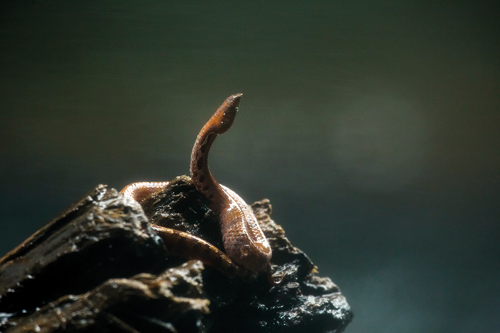The one that got away – Shehan Obeysekara
Ever since his mother first taught him to draw a bird, says Shehan Obeysekara, “art was the only thing that I was good at at school.” But he was also very interested in computing, and watched a lot of movies with his father, and steadily these coalesced into a love for animation, which he then ended up studying at art school in Malaysia.
He got into photography about nine years ago; but as someone used to capturing his images through drawing and painting – “absorb and express” – even now the models he looks to for inspiration are largely not photographers, but painters like Caravaggio and Zdzisław Beksinski. “They go beyond what’s merely visible: philosophy, ideas, their own expression of what the world is.”
He has worked in visual effects for film, and animation for advertising, but found he was spending too much time at the computer. In 2015 he took an entire year off, to drive around the island, solo, taking photographs. His recent environmental documentary project (a collaboration with Munira Mutaher) is currently on display in the Humanity & Earth exhibition at the Harold Peiris Gallery, sponsored by the Goethe-Institut.
The one that got away
‘I don’t really worry about regrets. If you love nature, you can climb mountains, say, but when you’re up there, with that spectacular view, you know that you just can’t really photograph that. The vastness, the air. The craft is to make somebody feel a bit of it. But it’s always “I’m gonna attempt to photograph this.” I’ve learned that some things are really just for the eyes. The photograph, capturing it, is a secondary thing.
But. This one time, about five years ago, I was driving really fast, late at night, coming back from the East coast. And there was a tree that was on fire. Just one tree. And it wasn’t even like the entire tree was on fire. It was inside the trunk, a massive fire blazing through it. And I said to my friend “Did you see that?? What was that?!”
When you remember a sight – when you don’t photograph it – there are somehow still infinite ways that you could have captured it. But when you’re actually there, there are practical limitations. In my mind, I could have photographed that burning tree in a million ways.
But also my childhood was full of stories of Sri Lankan myths and demons. I’m sceptical of all that stuff, but it is there: culturally, those stories come from something. And this tree caught me in that sort of mythical way: my mind went down that path, and those layers are the ones that got activated first. My mother and my sister say that they’ve seen ghosts – so all this time I had kind of been hoping I had witnessed something not from the ‘normal’ human spectrum of experience, something real, that kind of bridges those worlds. That would have been beautiful.
But about two weeks ago, the same friend sent me a video he found on Instagram, of a tree, and the centre of its trunk is on fire. It’s when lightning strikes: the tree burns outward from the inside. So, now that hope has been dispelled. Shame. I kind of wish I hadn’t seen it.
The shot that he got
‘I was staying in Sinharaja for a month, and there’s a place known locally as Ali Paha, ‘five waterfalls’. I would go there for a dip, often. And at this one place you could go under and behind the waterfall.
So I was there, watching the water, and then I went to climb out. I put my hand down on a log, for leverage, and felt something writhing under my hand. I jerked back, and this brown-orange viper sprung straight up, and started waving back and forth, like a pendulum.
I didn’t know then, but it was a ‘kunakatuwa’, which literally means ‘rotten bite’ [a hump-nosed viper, or Hypnale hypnale, venomous and responsible for the most recorded bites in Sri Lanka]. I was just frozen. This was a primal fear: the presence of immediate danger. I didn’t want to make any sudden moves.
I can’t remember how long I stood there; but eventually I stepped back. I got my camera, and took a few pictures. My hands were shaking, and the spray from the waterfall was ruining my lens – but I didn’t care. It was like I was in some sort of hazy shock.
And then on my hand I saw two dots. My mind registered this ‘fact’, and immediately there was this tingling, cooling feeling that went slowly down from my fingertips, along my arm, and down my spine. On our way back we met a guide, and I showed him a picture of the snake, and he just laughed. If it bit me, he said, my hand would have been the size of a coconut. That really taught me a lot about what your mind can do to your body.
I met a lot more snakes on that trip, and I’ve learned not to be scared. But when I got back to Colombo I also bought myself a snake book!’

‘Shooting from the hypnale’ by Shehan Obeysekara


